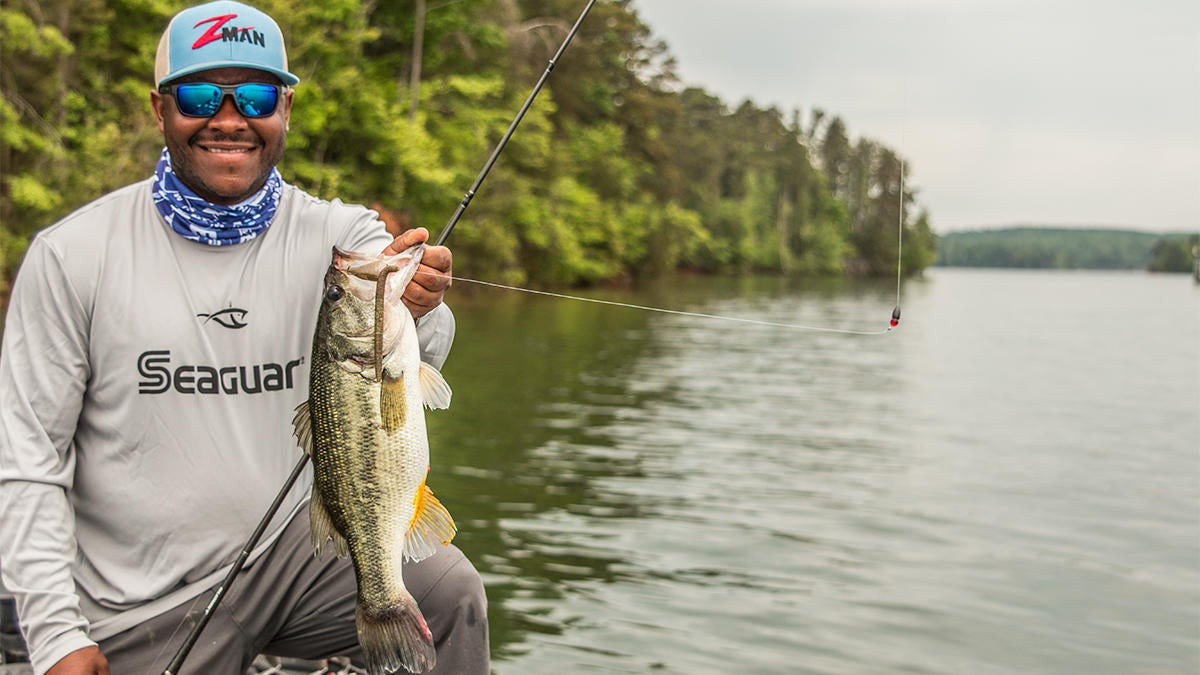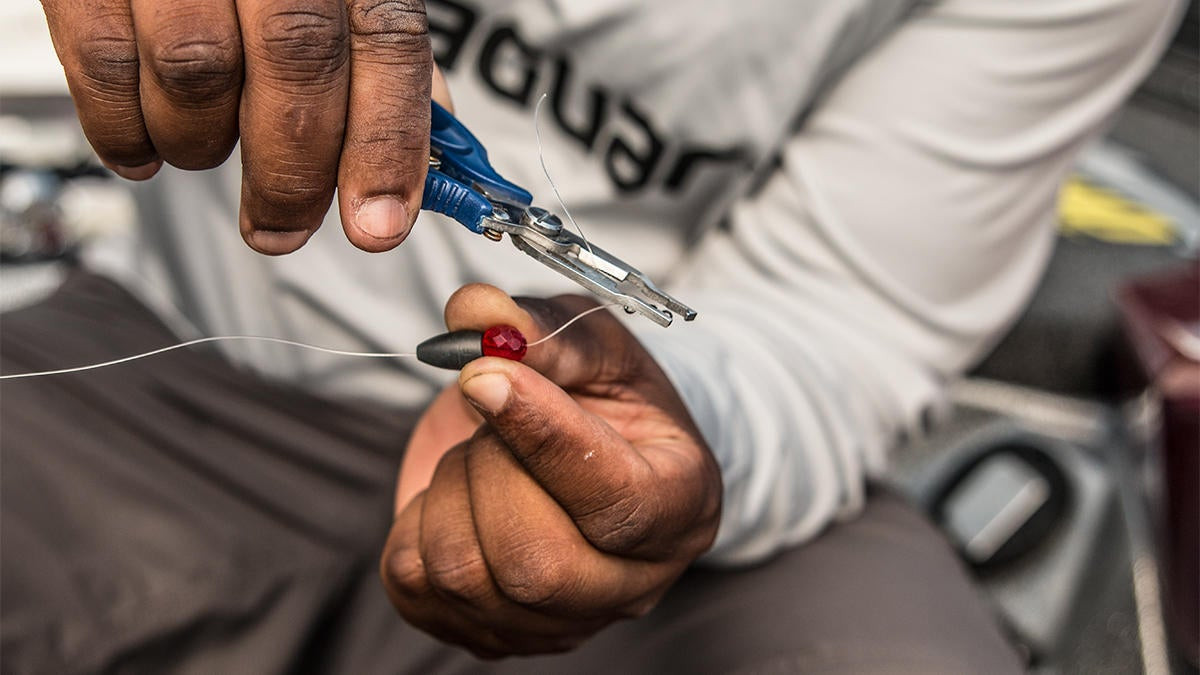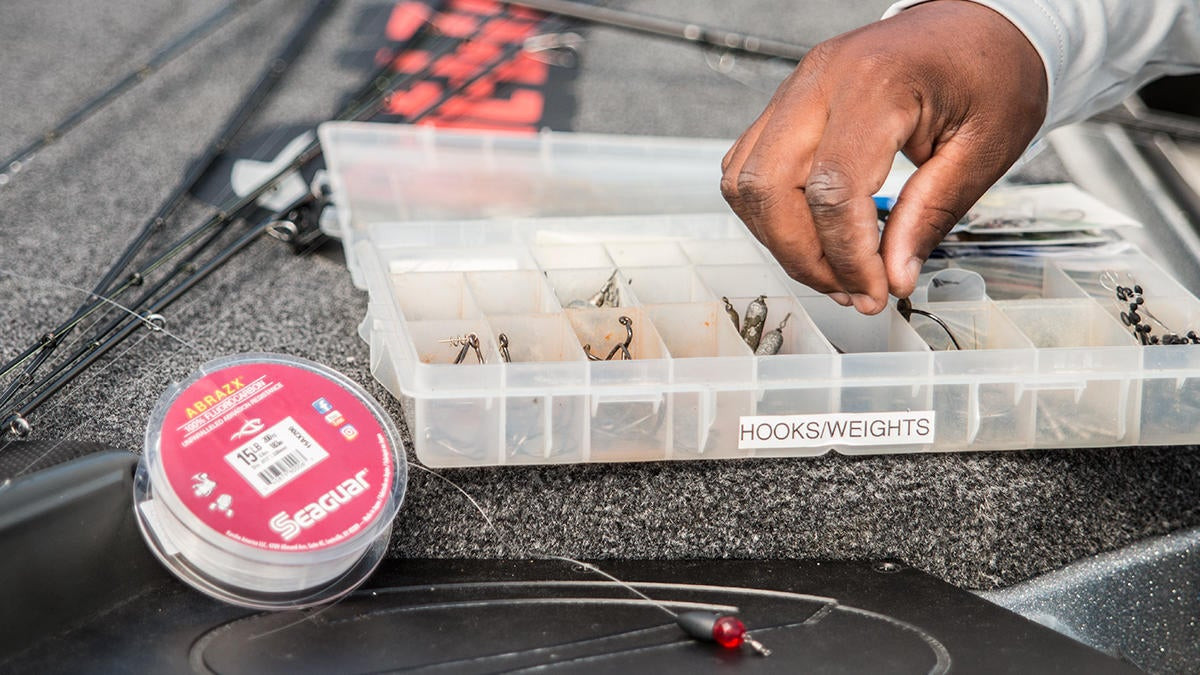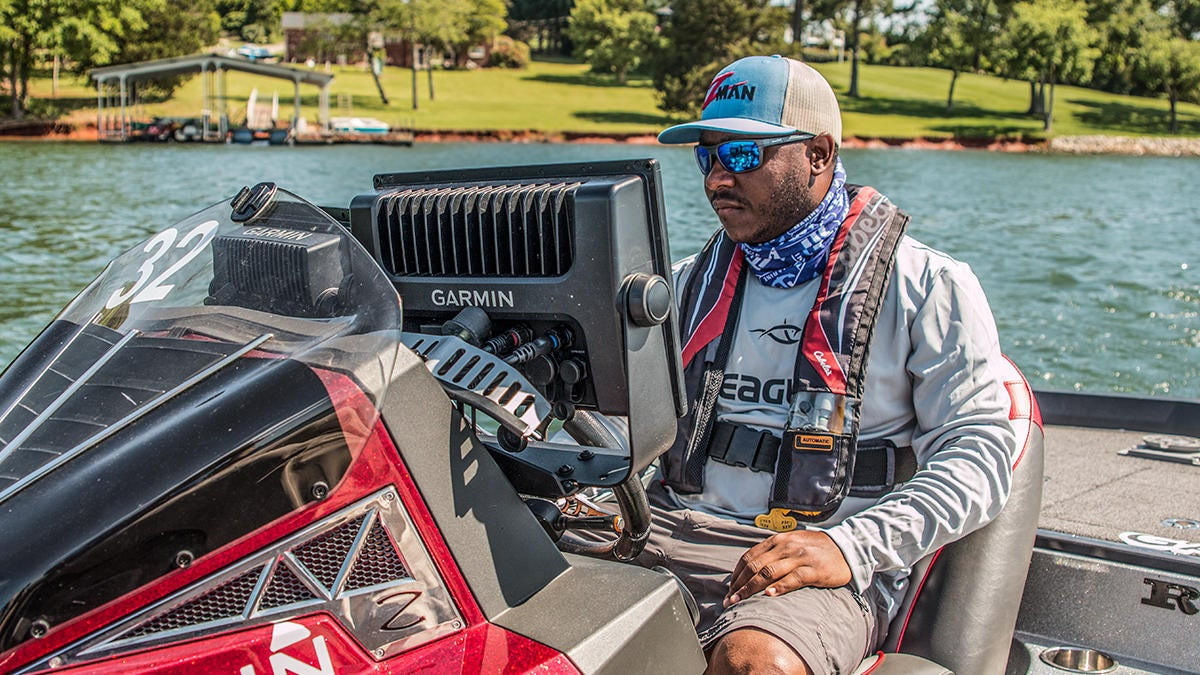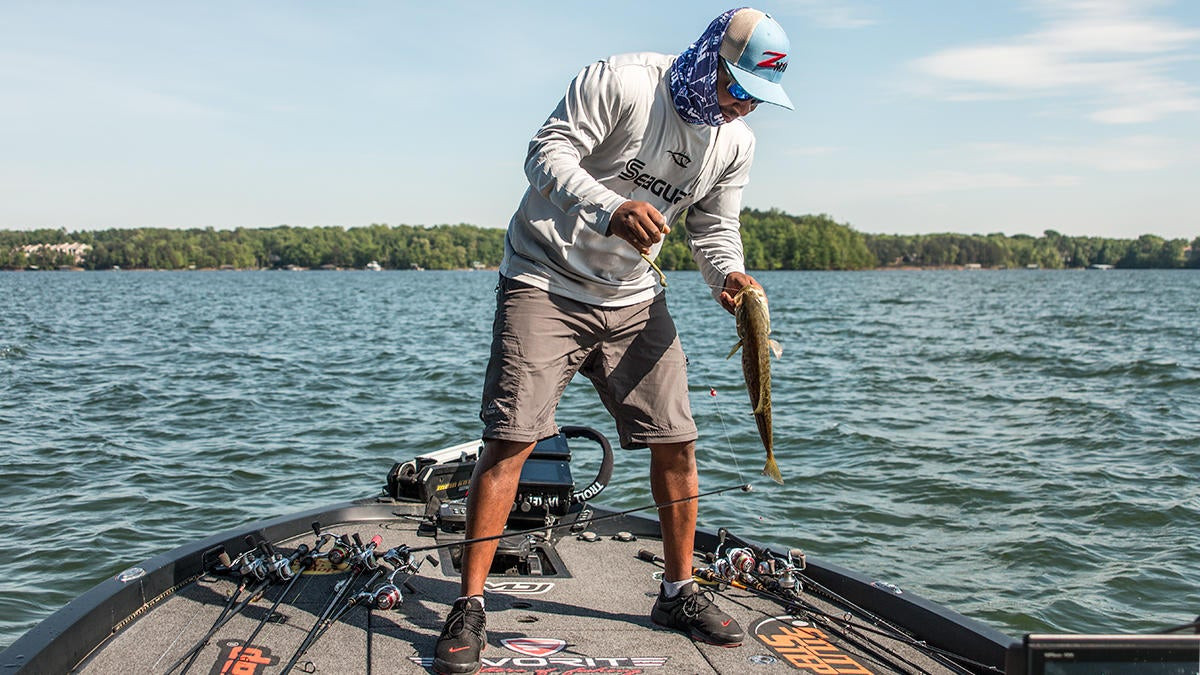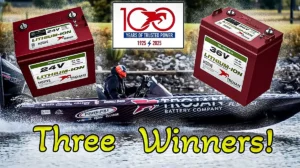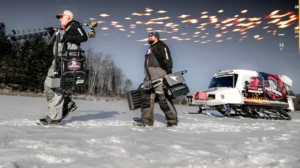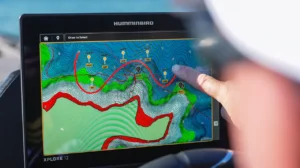Extreme weather conditions often dictate a much slower and more deliberate retrieve than many of us would usually prefer. Whether it’s the heat of summer or the dead of winter, a Carolina rig is an excellent option whenever the bite gets tough. This special rig allows you to methodically probe deep, offshore structure while presenting your bait in an incredibly lifelike manner.
Professional angler Mark Daniels, Jr. and I shared the boat this year and to be honest, the fishing wasn’t that great; until he brought out his C-rig. Daniels proceeded to put on a clinic, catching several nice bass in short order. Although it’s not a particularly complex technique, he does believe that many anglers are making some critical mistakes. If you take his advice, you’ll notice a sharp increase in your success.
Rethink your bead choice
The use of glass or ceramic beads is quite common when it comes to the Carolina rig. Placing a bead between your weight and swivel protects your knot from being constantly beat up by your weight. Additionally, as the weight hits against the bead throughout your retrieve, it produces an enticing clacking sound that curious bass can’t pass up.
Daniels, however, has made the switch to plastic beads lately. His reasoning makes a lot of practical sense.
“Now that tungsten and fluorocarbon are so popular, I wanted a bead that could take more abuse,” Daniels said. “That hard, dense tungsten will crack traditional glass and ceramic beads, which will fray your line in a heartbeat. As soon as you even think about setting the hook, your line is going to break.”
Growing up in California, Daniels has a lot of friends who fish in the saltwater for salmon. They turned him onto the idea of using these plastic beads and since he tried them, he says he’ll never go back.
Don’t cut your leader too short
Leader length is probably one of the most misunderstood aspects of the Carolina rig. It’s not necessarily complicated, but Daniels sees a lot of anglers cutting their leaders too short.
“I’ve noticed a bunch of guys using 10 to 18-inch leaders when they’re throwing a Carolina rig,” Daniels said. “Personally speaking, I like a 20 to 22-inch leader at all times. This added length gives your bait more freedom to float around, which gives it a much more natural appearance. Also, when your weight knocks against a piece of cover, it’ll kick your bait up and trigger a lot of reaction bites. A short leader severely restricts your bait’s potential.”
In regards to line selection, Daniels keeps things surprisingly simple. For both the main line and leader, he relies solely on 15 to 20-pound Seaguar AbrazX fluorocarbon line.
“I’m not a guy who has all sorts of different diameters going on with this technique,” Daniels said. “I like to keep everything as straightforward as possible. Whatever diameter I’m using for the main line, I’ll use for the leader and vice versa. If the water is clear, I use 15-pound AbrazX and if the water has some color to it, I’ll bump up to 20-pound AbrazX.”
To complete his Carolina rig, Daniels prefers an Owner All Purpose Worm Hook and a 1/2-ounce to 1-ounce WOO! Tungsten Flipping Weight.
Focus on high-percentage targets
All too often, anglers get in robot mode. Essentially, a lack of action will lull us into a rut and we’ll just start fishing everything that might look good. While you can certainly pick off a few fish with this approach, Daniels suggests focusing on high-percentage targets for the entirety of your fishing trip.
“In the mornings before I even leave the ramp, I’ll fire up my Garmins and carefully study the contour mapping of the lake,” Daniels said. “Their excellent mapping allows me to plan my entire day and feel confident that I’m fishing the juice. I’m looking for the same types of places throughout the entire year, to be honest.”
There are three types of structure that get Daniels particularly excited when he’s fishing a Carolina rig:
- Points – “With a Carolina rig, I really like to fish the tops of the points instead of the sides. I feel like it’s one of the most high-percentage areas on any lake. When it’s time to feed, you know those bass are going to move on top of the point to chow down. I’ll make long casts perpendicular to the point and the large majority of my bites come when my bait is right on top.”
- Ditches – Daniels considers ditches to be excellent safety zones for bass; one could even think of them as security blankets. In extreme weather such as cold fronts and heat waves, bass will retreat to these ditches. Because they normally offer some degree of verticality, the bass can quickly move up and down in the water column while using minimal effort. This allows them to quickly adjust their living situation when adverse conditions arise.
- Flats – “Bass love flats littered with stumps, gravel and other types of cover. But man, they can be so time consuming to dissect with most techniques. I love a C-rig for this type of fishing. You can get in those huge stump fields and instead of picking ’em apart one at a time, you can fan cast a Carolina rig and smash ’em. I did this at Toledo Bend and caught a bunch of nice fish.”
You don’t have to use creature baits
There are a lot of preconceived notions in bass fishing. We’ve all grown up doing certain things, we get a little confidence in them and before we know it, we’re set in our ways and not apt to try new things. Daniels urges anglers to try to avoid this at all costs, especially when it comes to choosing Carolina rig baits.
“So many anglers think their C-rig baits have to be creature-type shapes,” Daniels said. “They think that there has to be all kinds of appendages flapping around. While these types of baits work at times, I have had more consistent success on two other kinds of baits.”
- Z-Man ZinkerZ – Because Carolina rigs are so effective when targeting lethargic bass in tough conditions, Daniels leans heavily on a ZinkerZ stick worm. Even the old centipede-style baits can work, too, but Daniels prefers the action and durability of the ZinkerZ. These worms are naturally buoyant and and have an awesome fluttering action as they fall to the bottom. Their action is subtle and that’s the way Daniels likes it. He likes something non-threatening and very natural looking when the bass get lockjaw.
- Z-Man Turbo CrawZ – “You know, craw-style baits have really been ignored on Carolina rigs until recently. They’re taking off a bit more now because people figured out how much the smallmouth like ’em. But I’ll be the first to tell you that largemouth love ’em too. I primarily use this bait when I’m fishing off-colored water and want to create a little bit more commotion.
Get the slack out of your hookset
What red-blooded bass angler doesn’t like cracking a big bass on a big, slack-lined hookset? It’s one of the best feelings in fishing, but that doesn’t mean it’s the right thing to do in this situation. Whenever you’re fishing a Carolina rig, Daniels strongly believes that slack equals lots of lost fish.
“When I get a bite on a C-rig, I never swing on them like I would with a jig or Texas rig,” Daniels said. “I’ll drop my rod tip a bit and slowly reel until I feel the weight of the fish on the end of my line. Next, I’ll sweep the rod at a 45-degree angle for my hookset. At no point do I introduce any slack in my line. If you try this method, I can guarantee you’ll catch just about every one that bites.”
The next time the fishing in your area gets tough, make sure to tie on a Carolina rig. It may not be the most fast-paced action you’ll have this year, but it will certainly catch some of the biggest bass in the lake.


